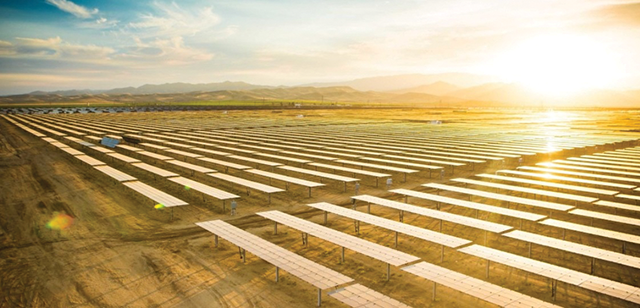When Mayor Eric Garcetti announced that Los Angeles wouldn’t spend billions of dollars rebuilding three natural gas-fired power plants, it signaled the beginning of the end for natural gas as a fuel for generating electricity.
Those of us who work in the solar and storage industry were not surprised.
Besides contributing to global warming, gas-fired power generation is just too expensive. In the industry, it’s well-known that solar energy is about half the cost of gas generation, and that solar plus storage is more reliable and still cheaper than a new gas-fired plant. But that fact seems like it’s almost a secret in the energy and climate debate in Washington, D.C.
Kudos to Garcetti for trusting the science and the economics of renewable energy technology and making the right decision.
Here’s what the mayor understood: The economics of renewable energy is moving very fast, and solar has gotten so cheap that it makes no sense to invest in new fossil fuel infrastructure.
How cheap? Last year 8minutenergy — my Los Angeles-based utility-scale solar and storage development company — signed a power purchase agreement in Nevada at a flat 25-year price of 2.3 cents per kilowatt-hour (inflation adjusted, that is less than 2 cents per kWh) for the Eagle Shadow Mountain Solar Farm near Las Vegas. That’s the current record-low price for solar in the United States, but it’s hardly unusual. The Los Angeles Department of Water and Power has already signed solar and wind energy contracts for hundreds of megawatts, and similar contracts are being signed around the country and the world. The latest innovation is that energy storage has gotten so cheap that combining it with renewable energy allows those plants to continue supplying electricity when the sun goes down at a lower cost than those natural-gas plants Garcetti just rejected.
Renewable energy combined with storage is a reliable 24-hour energy source that is easy to design a grid around. For example, we can predict, within 2 percent, the daily energy production of our California desert solar plants for years into the future.
Natural-gas plants, on the other hand, are seeing their costs increase as demand for their energy decreases. They’re caught in an economic death spiral. As cheap, renewable energy supplies more and more of our daily needs, natural-gas plants run less. Because these peaker plants — which generally run only during high-demand periods — have high fixed costs, lower utilization means their cost goes up per megawatt-hour. So evening peak power prices can now be well over 10 cents per kilowatt-hour for power from a gas peaker.
We can build dispatchable large-scale solar plus storage power plants for less than 5 cents per kilowatt-hour. And gas peakers are just the first of the gas power plants to be economically obsolete. In sunnier parts of the country, solar plus storage can beat the costs of combined-cycle gas plants.
What’s true in states with lots of solar, such as California, is soon to be true in other states. Texas, Florida, Nevada, Arizona, Colorado and New Mexico see the same solar-versus-gas economics. Those states are making the same choices that Garcetti did.
The new reality of renewable energy beating old fossil fuel technology on price may seem strange — but it’s time to get used to the idea. It saves consumers money and reduces global warming.
Tom Buttgenbach is chief executive and president of solar power developer 8minutenergy Renewables.

